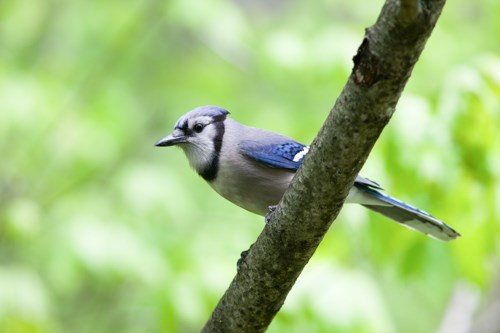
NPS/Gordon Dietzman IntroductionThese handsome and noisy birds are often maligned as “egg stealers,” because they are thought to seek out and feed on both the eggs and nestlings of other birds. While they probably do this, many other birds do as well. Being birds of forest edges, blue jays adapt well to urban settings, but also are attracted to the edges created by rural logging operations. As blue jays gain more access into the formerly heavy forest, whose isolation once provided predator protection for many songbirds, some fear nest predation of those smaller birds may increase. Authorities, however, seem divided on whether blue jays pose a threat to songbird populations. While the verdict may yet be out on the threat blue jays pose to songbirds, we do know they feed heavily on acorns, including hiding them beneath leaf litter for future use. These hiding places are usually at some distance from the mature oaks from which they were obtained and at a depth ideal for germination (unlike squirrels that bury the acorns too deeply). Some of these cached acorns are lost by the jays, germinate, and grow into trees. Blue jays, as a result of dispersing acorns, not only help oaks reproduce successfully, but also create the habitat needed for future generations of blue jays and many other bird and mammal species as well. For some people, blue jays are strikingly beautiful, highly intelligent, noisy, and desirable birds welcomed at bird feeders. For others, whether rightly or wrongly, blue jays are unwelcomed villains that sometimes eat other birds' eggs and nestlings. Fascinating Facts
Identification
|
Last updated: September 27, 2022
